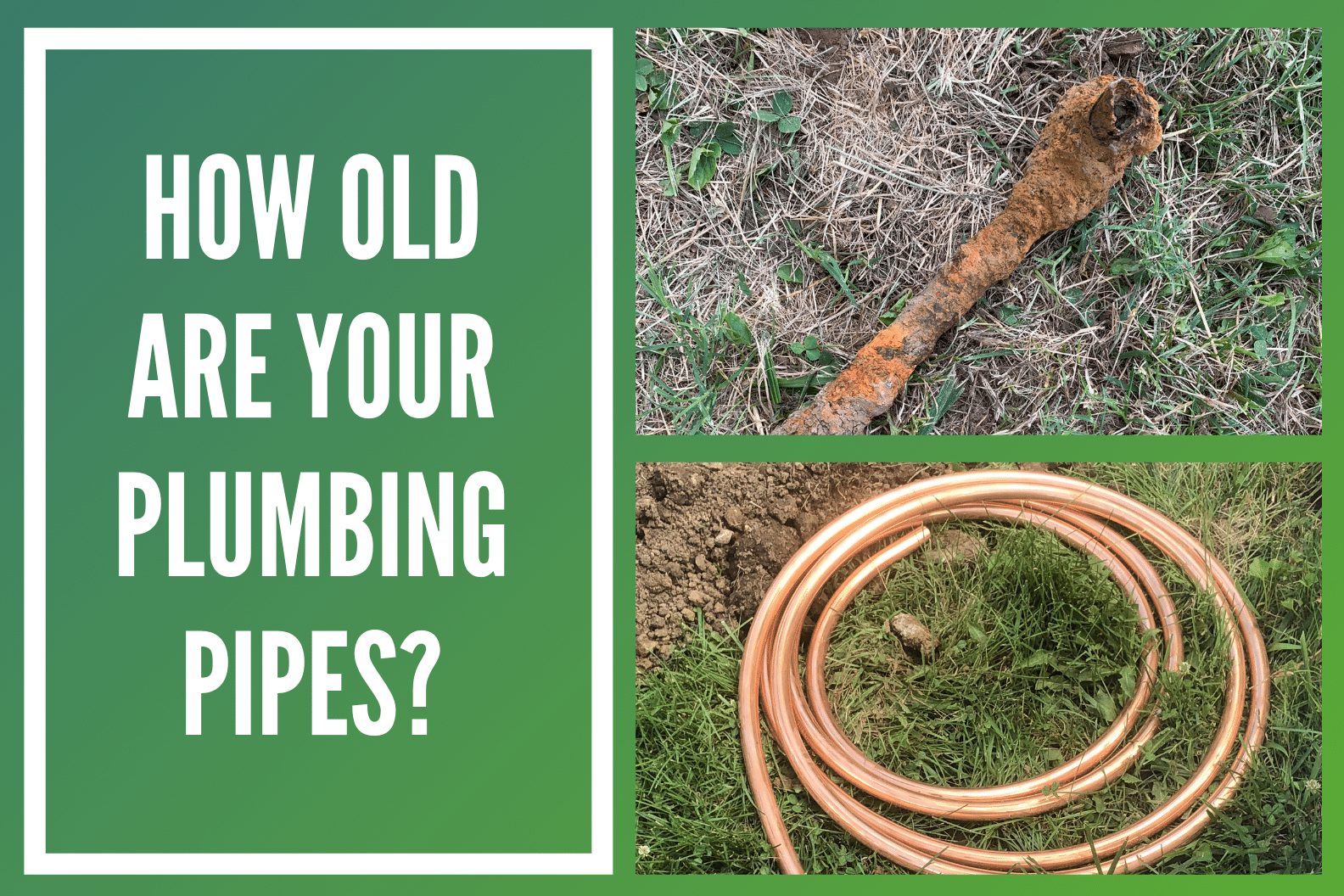How Old is Your Plumbing?
It’s no secret that as like everything else in your home, your plumbing pipes also have a lifespan on how long they’ll be functional. While the exact timeline is harder to determine than something like your hot water heater, it’s definitely possible to get an educated prediction. To provide a brief introduction, your plumbing pipes will eventually fail for a variety of reasons. Some of these are within your control, such as faulty components or a lack of maintenance, while others are inevitable, like the age of the pipes. With this said, as I mentioned above, it’ll be tough to gauge since the majority of the pipes are buried in the ground or hidden behind walls. Hopefully with this guide though, you’ll be able to plan ahead and replace any pipes before they cause more serious structural damage.
Knowing Your Material
First and foremost, you’re going to want to get an understanding of what you’ve got installed. By knowing this and then connecting it to the age of your house, you’ll know whether it’s even worth discussing at the current moment. Depending on the material installed, you can get an estimated lifespan. Plus, when you purchased your home, you should’ve received an inspection report detailing this information. Here’s some baseline numbers to go off:
- Copper: 50-70 years
- Brass: 40-70 years
- Cast Iron: 80-100 years
- Galvanized Steel: 40 years
- PVC: 50-70 years
A quick pro tip to keep in mind is that the actual pipe is only half of the equation. You also need to consider all the joints and fittings as well. A faulty component here will also pose the threat of a leak! Nonetheless, all of the materials from above are ones that (if maintained properly) can last a significant amount of time. Later in the post, I’ll break down what you should be looking for that could be signaling a leak.
Material to Replace Right Away
All of the materials in the prior section are built to last and should prevent you from suffering any major damages. However, we haven’t always had that knowledge and older homes could’ve easily been built with materials more prone to breakages. In this category, I’m talking about two primary material types: (1) Lead and (2) Polybutylene.
- Lead: While we now know that lead is a toxic material, we didn’t always have access to that information and lead was actually one of the first materials to be used in plumbing. The reason why it was initially used was because it possessed the rare ability to prevent leaks and be formed into shapes for transporting water. So, if it has already been banned, where is it still present? One of the main areas is homes built prior to the 1980’s. Here, you’ll potentially see lead solder connecting the copper pipes.
- Polybutylene: Our second type of material, polybutylene, was used heavily from 1978-1995. Essentially, it can be defined as a plastic resin that grew popular thanks to it’s low material cost and ease of installation. It was actually so popular that many considered it to be the pipe of the future and a comparable replacement to copper. While this might not have been known at the time it was being used, this material happens to turn very brittle over time. This led to a plethora of lawsuits throughout the 1980’s and 90’s, citing defective manufacturing and installation practices causing homeowners hundreds of millions of dollars in damages. In fact, it looks like reports are still surfacing as we found more talk of polybutylene last year in Oklahoma.
Symptoms of a Pipe Leak
As alluded to above, a pipe leak sounds like it would be easier to spot than it really is. Many of these pipes could be hidden below concrete, thus requiring a careful excavation process, or behind the walls, which is another problem in itself. The best thing you can do as a homeowner is catch it early in the process. As is the case with most plumbing failures, the earlier you catch it, the less damage there is and the cheaper your repair bill is. This is even more important when it comes to a pipe leak.
- Low Water Pressure: One of the most common signs we hear when Kansas City homeowners first reach out to us with a plumbing issue is low water pressure. While this could be caused by a wide variety of things, today’s plumbing technology with camera inspections makes everyone’s lives much easier. In any case, low water pressure usually means there is a clogged drain or faulty pipe somewhere in the plumbing system.
- Cracks or Corrosion: If it’s visible, this is going to be one of the most telling signs that you have a leak. For those that follow our Facebook page, you might’ve seen a video of a water service replacement we completed recently in the Independence, MO area. This portrayed a copper pipe that had failed and how replacing this was not as easy as you’d think!
- Other Visible Signs: While plumbing failures can quickly cause damage to your house, they’re also great in showing themselves when they occur. Wet baseboards and water-stained flooring are both immediate signs of needing to call an experienced plumber!
Knowing What to Replace
To avoid having to spend a fortune on your plumbing project, you’ll want to have a local plumber provide their two cents on if a repair or replacement is needed. However, there are some best practices on what’s easiest to replace and for cost purposes, would make the most sense to start with.
- Exposed Plumbing: Any exposed piping is going to be a lot easier and cheaper for a plumber to replace. This way you don’t have to worry about going through plaster or wood paneling walls to reveal the pipes.
- Two Things at Once: Planning a kitchen or bathroom remodel? Good news! That means it’ll be the perfect time to get your eyes on the plumbing pipes. While it’s exposed, make a careful inspection of its state and determine if any repairs are needed. It’ll be a lot cheaper to do it at this stage than when everything is back together!
- Not So Lucky: While the items above are best case scenario projects, that won’t always be the case. Sometimes, you’ll notice signs of a leak or crack and are going to be forced to do some demolition to make the necessary repairs. The best advice I can give you here is to make the repairs right away before it turns into an even bigger project.
Research and Keep Your Eyes Open!
Even as someone that’s been in the plumbing world for over 40 years, it can be incredibly tough (or even impossible) to predict when a plumbing system is going to fail. While I feel fairly confident in giving a diagnosis on a water heater or fixture, pipes are different. The best preparation you can do is understand what type of pipe you have installed and where that stands in the lifecycle expectations. After this, you’ll need to keep your eyes open and act if something ever seems off. For example, if you have a slow-moving drain, make sure to get that snaked before a more serious clog occurs.
Need an Experienced Plumber in Kansas City?
Based on the timetables above, are your pipes nearing their end? Maybe you’ve noticed some of the signs of a pipe leak and want to make sure everything is structurally sound? In any case, don’t hesitate to reach out to our team at Stine-Nichols plumbing. We provide free quotes and would be happy to take a look at everything to determine if you actually do have a leak on your hands. Additionally, we’ll let you know whether or not a repair will fix the issue or if your Kansas City plumbing system needs a complete repiping. We operate throughout Kansas City and all of the surrounding cities (Johnson County, Platte County, Jackson County, Cass County, Clay County).


